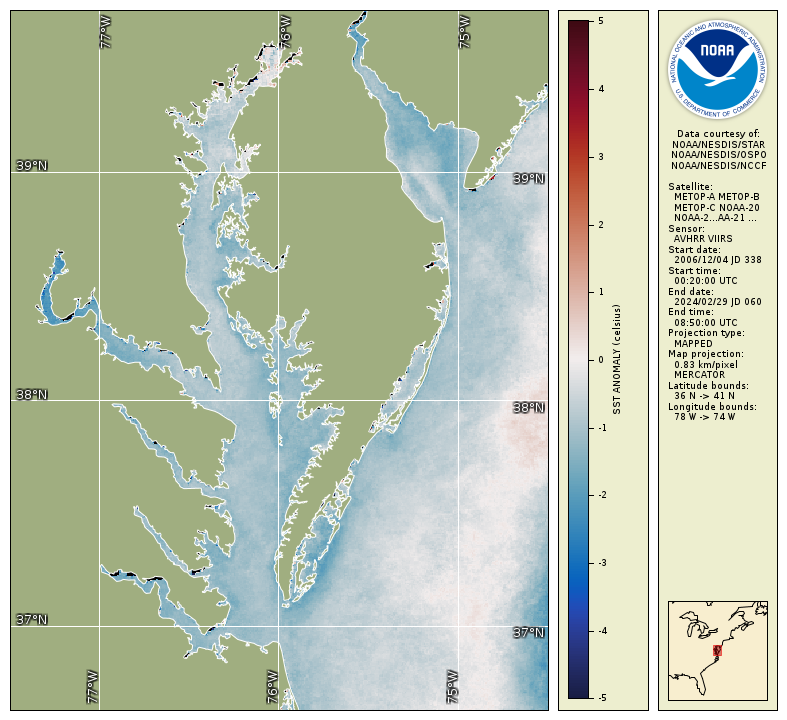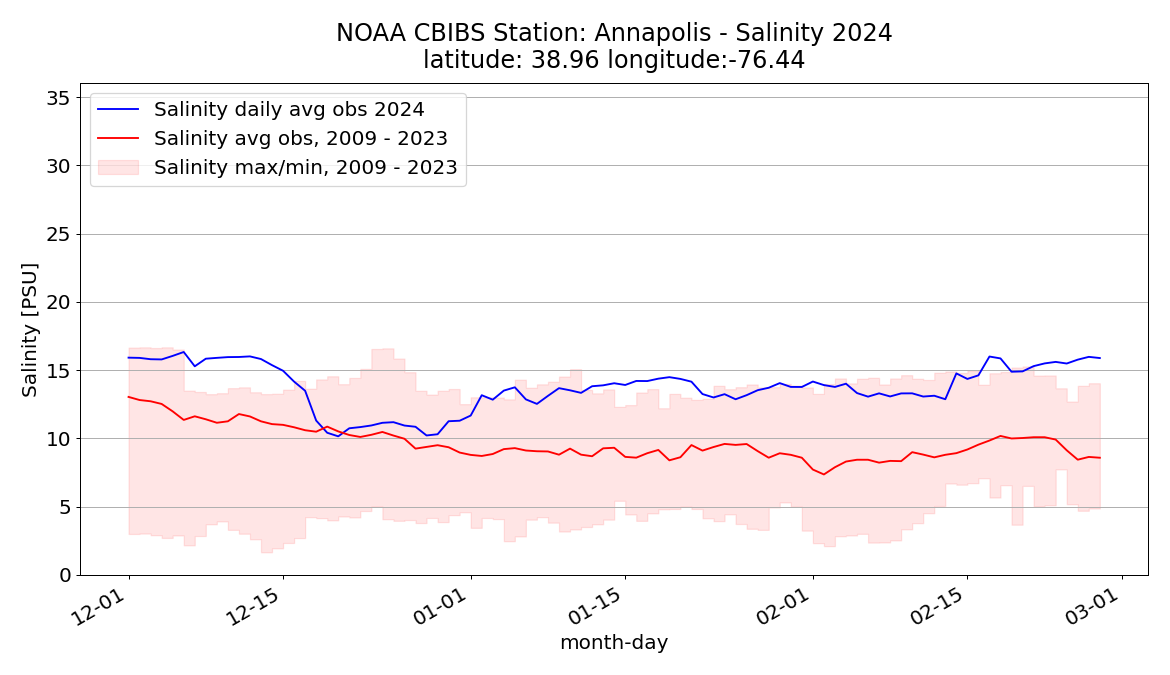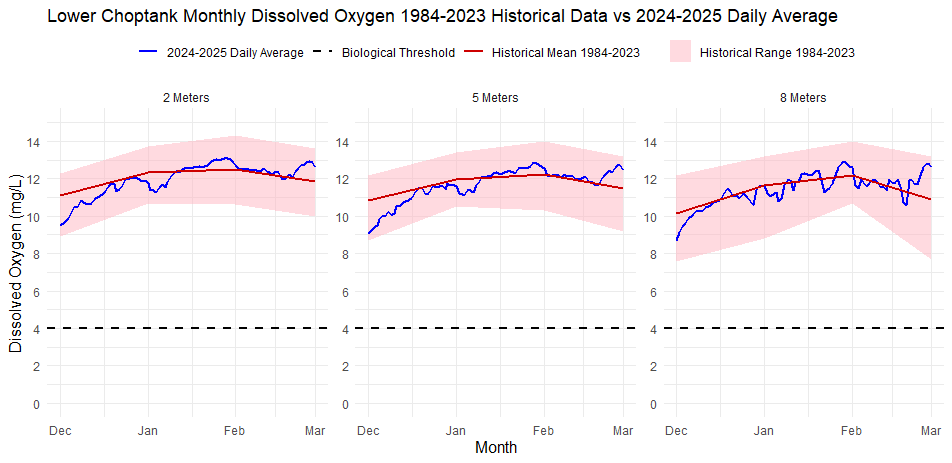Data from CBIBS buoys, satellites, and other sources can highlight where water conditions differ from average. NCBO scientists use this information to explore how these differences might affect some Bay species. Four times each year, they summarize what the conditions were—and what that might mean for the Bay’s living resources. Here are some findings from the Winter 2024–25 Seasonal Summary. For more information, graphs, and figures, you can access the full scientific document.
Water Temperature
In general, winter water temperatures around the Chesapeake Bay were cooler than the long-term average. Data from NOAA satellites show cooler waters in all but the northern Bay around Susquehanna Flats. Water temperatures at NOAA CBIBS buoys were sometimes below the long-term average by several degrees. In winter 2023–24, water temperatures were above average.

Sea surface temperature anomalies observed by NOAA satellites December 2024–February 2025 relative to the average of this seasonal period 2007–2024.

Surface water temperatures at the Annapolis CBIBS buoy December 2024–February 2025 relative to the long-term average (2010–2023).
Precipitation and Freshwater Flow
Rainfall, and resulting freshwater flow into the Bay, were lower than usual. In southern Maryland, rainfall amounts were among the lowest since 2007.

Precipitation data from 2007–2024 for December–March for southern Maryland. Data from NOAA Centers for Environmental Information.
Less precipitation means lower freshwater flow into the Bay, which results in higher-salinity waters. Data from CBIBS buoys shows that this was indeed the case for winter 2024–25: Salinity at the Annapolis CBIBS buoy was at times 5 PSU higher than average. Last winter, salinity was generally lower than average.

Salinity observations at the Annapolis CBIBS buoy December 2024–February 2025 (blue line) relative to the average at each buoy over this
seasonal period 2009–2023 (red line).
Dissolved Oxygen
The NOAA Chesapeake Bay Office tracks data throughout the water column at a handful of locations using “hypoxia buoys,” but pulls most of them out of the water for the winter to avoid damage from potential icing events. One station, in the Lower Choptank River, was left in the water over the winter. Dissolved oxygen levels there remained above the biological threshold of 4 mg/L throughout the winter. Above 4 mg/L, there is enough oxygen in the water to support aquatic life.

Dissolved oxygen (DO) daily averages at the Lower Choptank buoy for December 2024–February 2025 compared with long-term averages (1984-2023) from a nearby fixed monthly monitoring station. 2 meters, 5 meters, and 8 meters refer to the depth at which data were collected. The shaded area is the historical range of DO observations from the monitoring station, and the red line is the historical mean. The blue line is the 2024 daily average DO.
Effects on Living Resources
Colder winters are generally better for striped bass, because they lead to better food availability in the spring. That's because colder water temperatures over the winter can slow the development of copepods until just the right time in the spring, so that copepods are available when larval striped bass want to eat them.
But low freshwater flow caused by low precipitation, as we saw this winter, can diminish availability of this important prey species in the places where they are needed. Even if there are plenty of copepods, thanks to the colder winter, if there's not enough flow to get them to the right places, the striped bass larvae won't be able to eat them. This timing is complex, and we will have to wait until spring to see how it works out.
Lower winter temperatures can also affect blue crabs and intertidal oysters. More blue crabs die if the water temperature gets below 38.12°F. We don’t know if the lower-than-average water temperatures this season, which dipped below the 38.12°F threshold, led to more crabs dying this winter in the Chesapeake Bay than usual. We will learn more about the blue crab population when the annual Winter Dredge Survey is released later this spring.
Intertidal oysters, which are exposed at low tide to freezing air temperatures, also are likely to show high mortality levels during colder-than-average winters. Subtidal oysters, which remain below the water at low tide, are unaffected by cold air temperatures.


